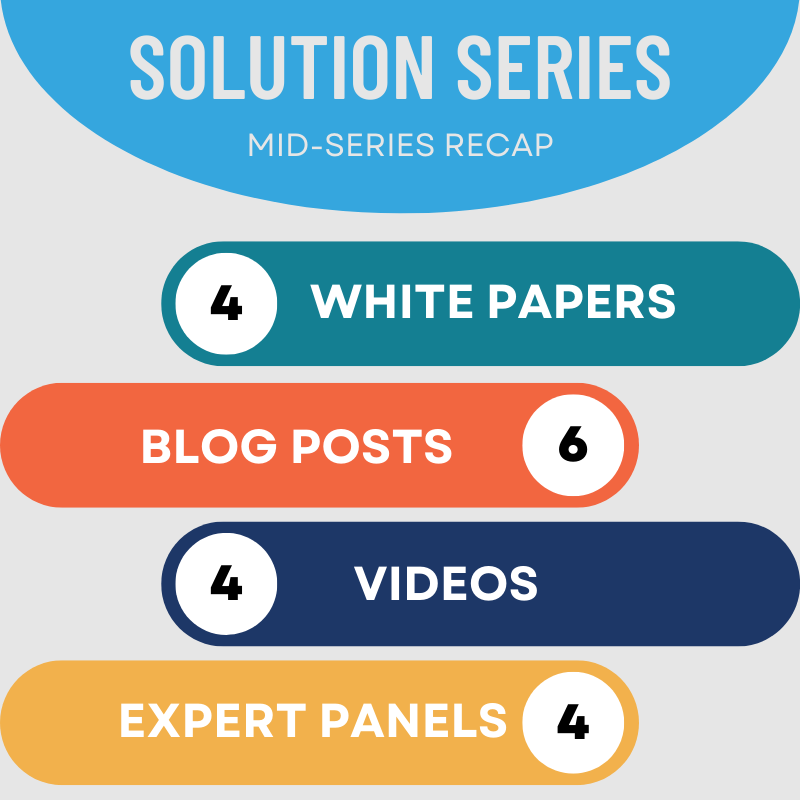Solution Series: Mid-Series Recap
by Zoe DeBroux, F4CR Intern
These past few weeks, we had the opportunity to pause and reflect on our work with the Solution Series and the Foundation as a whole. It has been a great opportunity to celebrate the Series’ midpoint and discuss what’s coming up next in 2023. We created the series to respond to our community’s request for help understanding carbon dioxide removal (CDR) solutions that can restore our climate and how they compare to one another. In the first half of the series, we published four installments consisting of a total of four white papers, six blog posts, four videos, and four panel discussions!

We collaborated with leading experts to review our work, trained a series of interns to help with research and writing, designed a landing page that includes a (soon-to-be) interactive infographic and a search engine, and so much more. And, most importantly, we educated hundreds of people about the exciting solutions available to restore our climate.
Our mid series panel discussion featured a couple of the people behind the Solution Series, highlighting Delaney Pues and Erica Dodds in a conversation about their work and what’s next for the series. This conversation flowed into a discussion of the four solutions, highlighting the durability, scalability, financeability, and equity behind them.
Direct Air Capture is a rapidly evolving technology with the potential to remove up to 5 gigatons (Gt) of CO2 per year by 2050. Achieving this will require using renewable or low-carbon energy, supportive policies, market development, commercialization, and mass deployment to drive down the price and increase its scale.
Forest Carbon Practices encompass afforestation, reforestation, improved forest management, and sustainable forest management practices; each taking a slightly different approach towards increasing the amount of CO2 absorbed by and stored in forests.
Soil Carbon Practices discusses regenerative agriculture and soil carbon sequestration practices that can boost crop yields while improving plant, ecosystem, and soil health and resiliency and increasing the amount of carbon stored in soils.
Finally, we explore Coastal Blue Carbon Practices, and how carbon stored in coastal soils can remain there for centuries to millennia and improve the health and resiliency of coastal ecosystems around the globe!
Key Takeaways
First, we learned that carbon stored in soil is a lot more durable and resilient than biomass. Having carbon stored underwater as opposed to on land helps reduce decomposition, which in turn reduces the release of CO2 back into the atmosphere. Another important point is that the effectiveness of any type of natural solution is subject to the health of the environment it’s being applied to. With increasing climate change impacts, the durability of storage becomes more of a pressing issue. In terms of financing, it’s a lot less expensive to preserve and restore the health of existing ecosystems than to create new ones. This is why it’s so important to protect our natural resources!
At the end of the day, there are a lot more open questions about technological CDR (because they’re newer) than nature-based approaches, but that doesn’t take away from the fact that technological solutions can achieve higher scalability and less variable durability than nature-based approaches. Each solution comes with its own set of equity considerations, but all of them will require meaningful stakeholder engagement, an equitable distribution of benefits, safeguards to protect communities from potential risks, and supportive governmental accountability structures like policy and regulation.
All in all, the Mid-Series Recap proved to be a motivating opportunity to reflect on how far we’ve come in terms of climate restoration education. Beyond this, we look forward to further focusing our efforts in the areas that are likely to be most effective for our local and global communities!